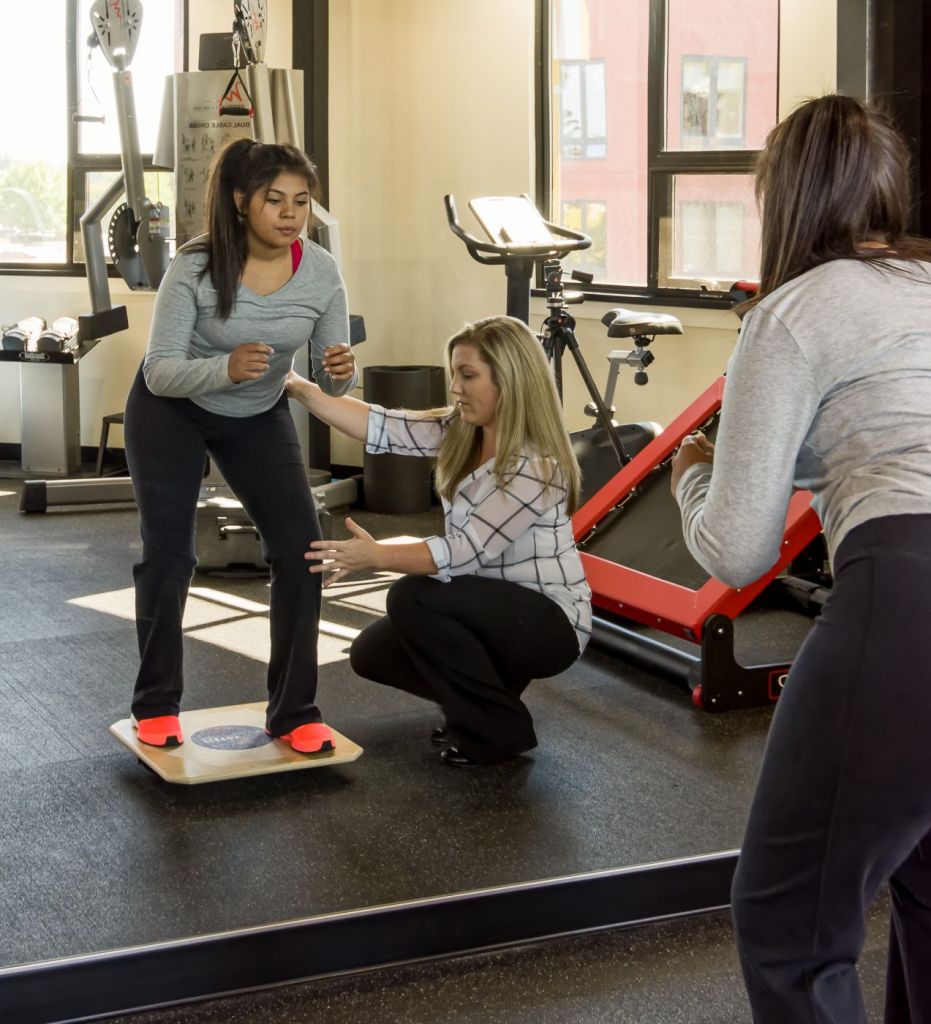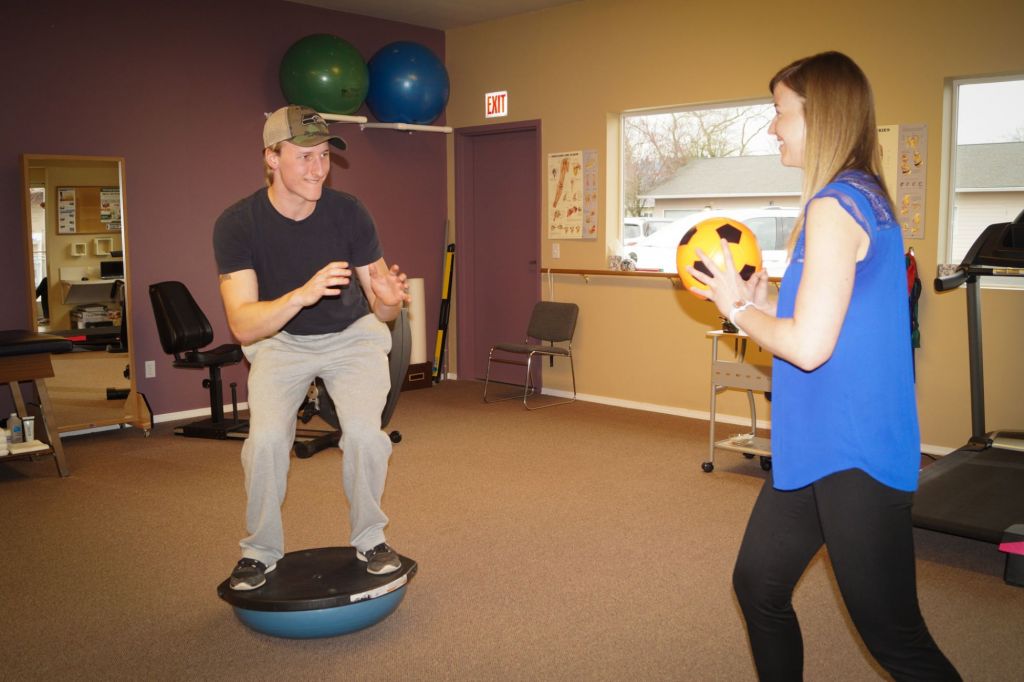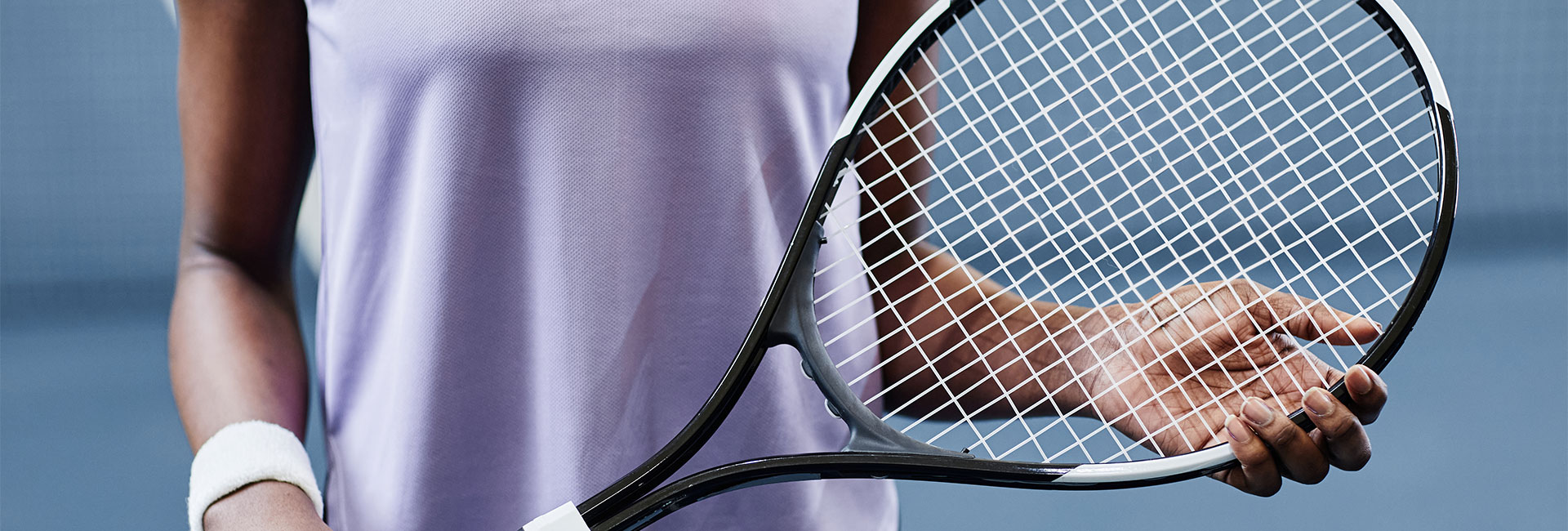Tennis is a dynamic physical sport requiring hand-eye coordination and full-body engagement in order to run, position, swing, and hit. Because of these demands, cardiovascular endurance, flexibility, balance and extremity and core muscle conditioning exercises are important to increase performance and prevent injuries. Most injuries can be minimized or avoided entirely by proper conditioning, proper technique, appropriate equipment, and seeking timely medical attention for chronic nagging pains or acutely painful conditions.
The most common injuries associated with tennis are rotator cuff tendonitis, lateral epicondylitis (tennis elbow), wrist strains, back pain, patellar knee pain, calf and Achilles tendon injuries and ankle sprains.
A training regime that combines stretching, strengthening, proprioception (balance), and cardiovascular conditioning could be helpful in preventing these injuries.
Stretching to avoid tennis elbow and other injuries.
Stretching upper and lower extremity muscles as well as the trunk musculature on a regular basis enhances joint range of motion (i.e. increases flexibility) allowing greater movement and could possibly decrease the frequency of injury to “stiff” muscles.
For the arms, focusing on stretching the wrist flexors/extensors, the triceps, and the backside of the shoulder muscles would be appropriate. In the legs, the calves, quadriceps, hamstrings, adductors and hip rotators are important.
Lastly, the low and mid-back muscles need attention as well. As we are aging, our connective tissue (including muscle) is not gaining flexibility. In fact, it is losing it, so any amount of stretching before, during, or after a tennis match could be helpful. Ideally, the muscles should be “warmed-up” by incorporating a dynamic warmup into your pre-match stretching.

Add strength training to improve your tennis match and avoid injury.
Strengthening is important to support our joints and lessen the impact our play (and body weight!) has on them. Strength training can also help protect the new, increased range of motion gained through stretching.
Strengthening as few as two times per week can be helpful to a few key muscle groups – most notably the rotator cuff complex, which rotates the arm in (think forehand) and out (think backhand), and the forearm, which helps support the wrist and elbow joints. The most important muscle groups in the legs to focus your strength training on include the quadriceps, hip rotators, and hamstrings. The lower leg muscle groups will be strengthened primarily through balance activities mentioned later.
Finally, the core muscles need attention in order to generate power in all tennis strokes. This includes not only the trunk rotators, but also the back extensors and abdominal flexors.
Balance for increased performance on the tennis court.
Proprioceptive (or balance) training does not need to be fancy and does not require special equipment. It can be as easy as standing on one foot while looking in different directions or closing your eyes. The body’s ability to recognize changes in joint position as you move quickly enhances protection of your musculoskeletal structures. This is a feedback loop from your joint to your brain and back to your muscles. The faster the signal gets to your brain the faster your muscles can control your joints to avoid injury.
We can train this by providing a challenging environment to balance whether using the single leg stance on solid ground or using various balance tools such as a BOSU ball, a rocker board, 1/2 foam roller, etc. Usually, 2-5 minutes of challenging but controlled balance work should be sufficient for a session.


Cardio training for tennis.
Lastly, cardiovascular endurance rounds out the training regime in order for you to finish a multiple deuce game or tie-breaker set. Running, biking, swimming, elliptical trainer, you name it, whatever gets your heart rate moving and sustained for at least 30 minutes is important as part of any fitness routine and very valuable for tennis fitness, especially if you play singles (you already know this, it is not a new idea).
Playing tennis is a passion for a lot of people. Training for tennis is sometimes an afterthought, but it is integral to not only improve your game, but to give yourself the best chance to stay injury-free. Consider working with a physical therapist if you’re unsure about your training, or if you have any nagging pain or past injury giving you concern. At Therapeutic Associates Physical Therapy, we are here to help keep you acing your way to a healthy tennis season.
We look forward to being a part of your healthcare team.
From injury recovery to movement and performance enhancement, patient success is our passion. Our therapists are committed to the application of evidence-based treatment techniques to ensure you experience the best in rehabilitation and preventative care and see progress with every visit.


